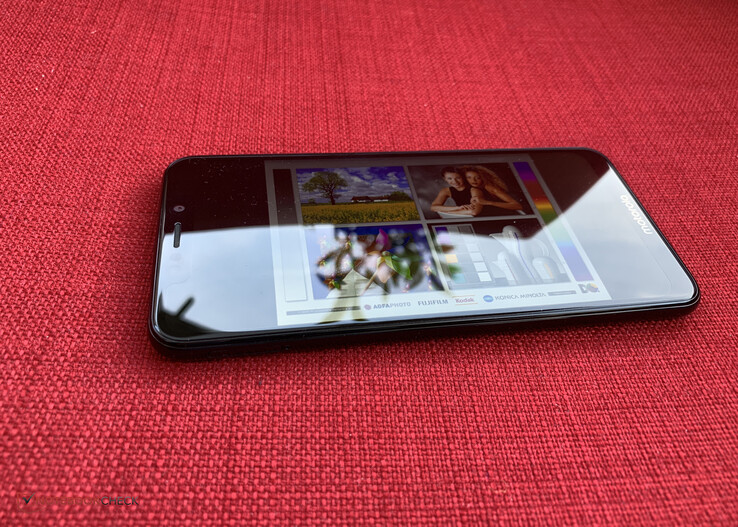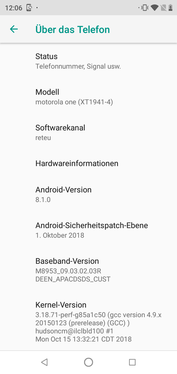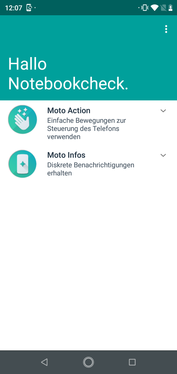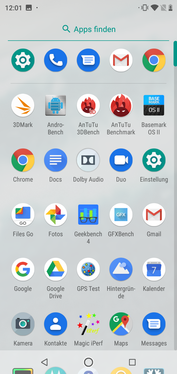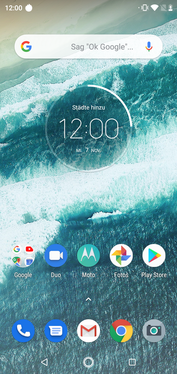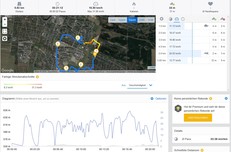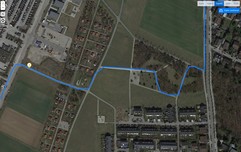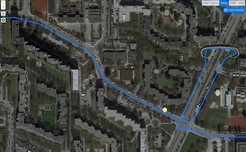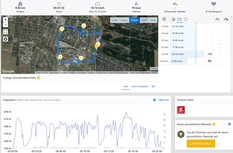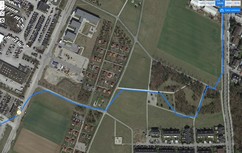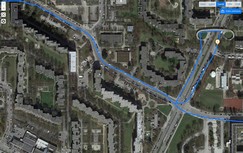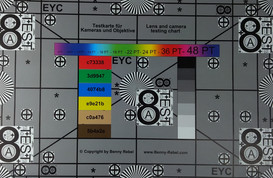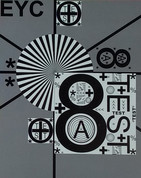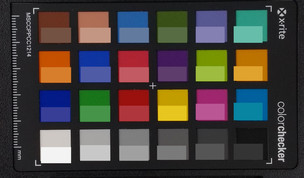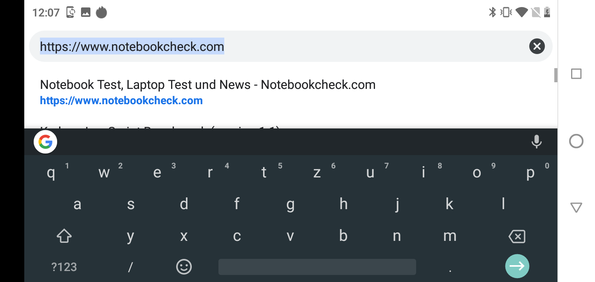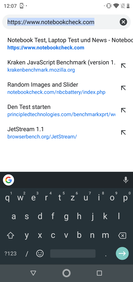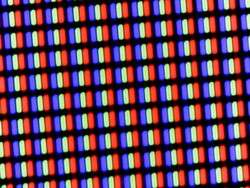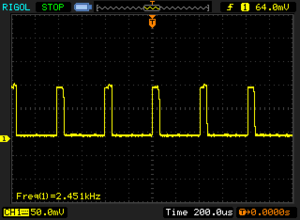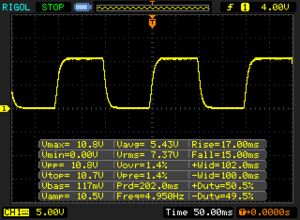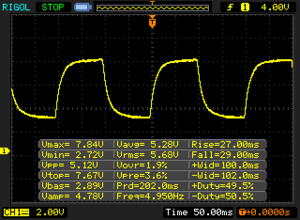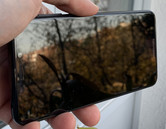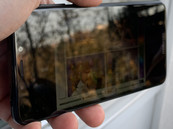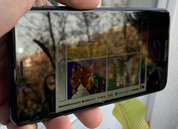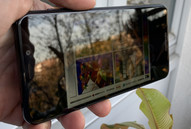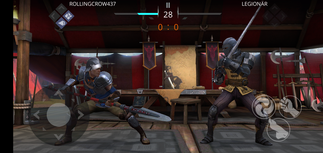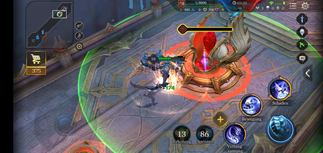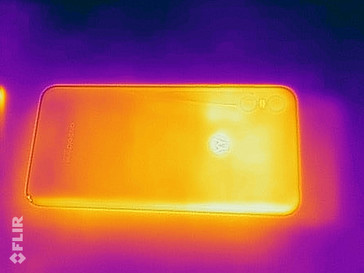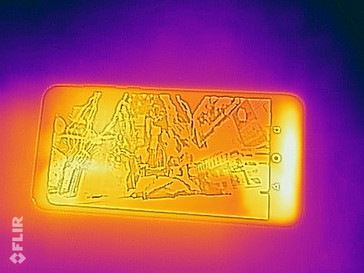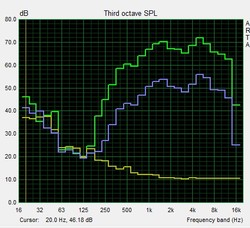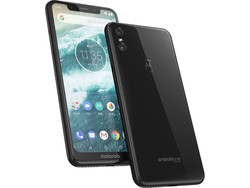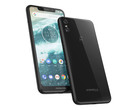Motorola One Smartphone Review
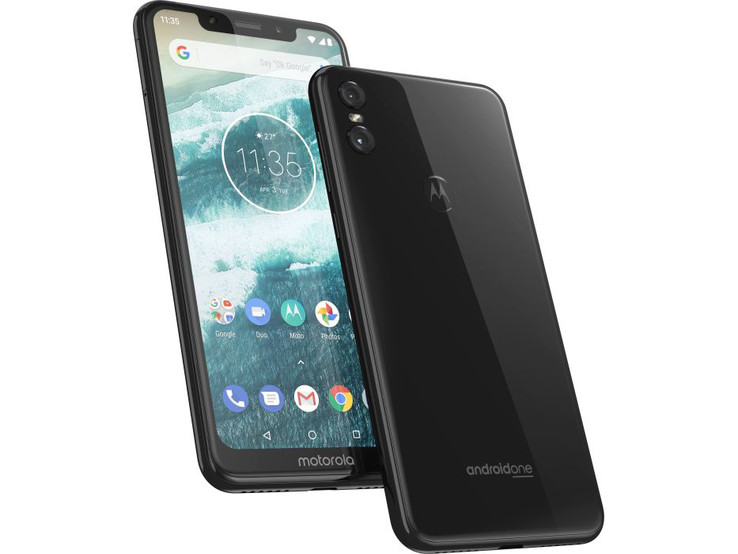
We are used to pure Android from Motorola smartphones, and there is no launcher on Motorola's smartphones that tries to "improve" on Android, which is already fairly intuitive anyways. Instead, Motorola only extends the capabilities of its smartphones via apps by some functions such as the always-on display. Until now, its mid-range has been reliably called the "Motorola-G series," but now Motorola wants to expand further on the concept of smartphones that are reduced to just the essentials by bringing the Motorola One to the market, which is part of the Android-One program for the first time. With Android One, Google wants to ensure that Android smartphones are always kept up to date for a long time and also include the newest innovations offered by Android.
At first glance, this looks like quite an ordinary Android mid-range smartphone with a large display, but it also has a large notch at the top of the display containing the camera, sensors, and earpiece. In its price-class, the smartphone initially competes with the in-house Moto G6, and then also with the Sony Xperia XA2 Plus, the Honor Play, and the Xiaomi Pocophone F1. Let's see whether Motorola's newest smartphone can assert itself.
Case – Simple and inconspicuous
"Simple and without any frills" - with these words you could describe the design of the Motorola One. Motorola deviates from the design language of its other Moto devices in some areas here, perhaps to underscore the special position of the Motorola One visually as well. While Moto smartphones usually emphasize more organic curves, the Motorola One appears slightly more angular. Our test unit also does not have the round camera module of the other Moto devices, but the two lenses on the back are positioned separately in the case and are not in the center but are on the left edge of the case. The manufacturer logo in the fingerprint sensor on the back is one of the few design characteristics the Motorola One shares with other Motorola smartphones.
The inconspicuous design continues in the choice of colors: Black and white are the most conservative choices we can think of.
With its rounded corners, the Motorola One fits into the hand well, and at 160 grams (~5.6 oz), it is also a relatively light smartphone. The case is robust: Our test unit is not affected by pressure, and only occasionally do we hear some slight creaking when we try to twist it.
Equipment – A separate microSD slot
With 64 GB of storage and 4 GB of RAM, our test unit offers the same amount of storage as the Moto G6 Plus, while the Xiaomi Pocophone F1 offers slightly more RAM. Thus the equipment of the smartphone remains within the usual range for the price class. Dual-SIM capability and an FM radio are also included, and the internal storage can be expanded by up to 256 GB via microSD card. While you cannot move apps onto it, the microSD can be formatted as internal storage. It is gratifying that the microSD slot is kept separate, so that you can use two SIM cards and a microSD at the same time.
Software – Updates every two months, Android 10 is guaranteed
Traditionally you get quite a clean Android with Motorola, so for those who know the brand, there is not much change here. The Android One program promises monthly security updates for three years and the newest Android versions for two years. However, Android 9 is not available yet on our test unit and you would have to be content with Android 8.1 at the time of our testing. This means that Motorola only guarantees a later update to Android Q. The next version is currently not mentioned. The security patches are from August 1, 2018, so they are not really current anymore in November, at the time of writing. Naturally, this is surprising, since the main promise of Android One to always offer an up-to-date smartphone operating system has not been kept. Then in the course of our test, we received an update that put the security patches on the level of October 1, 2018. At least there is supposed to be an update to Android 9 before the end of the year.
There is no bloatware, which refers to additional unnecessary or advertising software, on the Motorola One. The tradition of a preinstalled Moto app, which allows you to control additional functions of the smartphone, is also maintained here. These include an always-on display that also shows information in standby if needed, or an option for gesture controls.
Communication and GPS – Motorola One with slow WLAN
The Motorola One supports WLAN networks according to the 802.11 a/b/g/n standards. While you cannot connect to faster ac networks with this, you can use the less-congested 5-GHz band, which usually benefits the stability and speed of the connection. In terms of speed, the Motorola One behaves quite similarly to the Moto G6, which is not a compliment, since a maximum transfer rate of about 110 Mb/s is quite meager for a mid-range smartphone, as the comparison devices also demonstrate.
In mobile networks, the Motorola One is able to use many LTE frequencies: 12 different bands are available, so that travel abroad to other countries should not pose any problems. For example, anyone who travels to the USA a lot can connect to the LTE bands 2 and 4, which are very important there. In the German D2 net, the signal quality is quite good, and we have at least half the LTE reception even in enclosed spaces.
| Networking | |
| iperf3 transmit AX12 | |
| Xiaomi Poco F1 | |
| Sony Xperia XA2 Plus | |
| Honor Play | |
| Motorola Moto G6 | |
| Motorola One | |
| iperf3 receive AX12 | |
| Xiaomi Poco F1 | |
| Sony Xperia XA2 Plus | |
| Honor Play | |
| Motorola Moto G6 | |
| Motorola One | |
Buildings with concrete ceilings present a difficult test for the locating system of the Motorola One, and we are unable to determine our position here. Location works much better near a window, and outdoors the accuracy quickly rises to about five meters. While the location can also be determined very quickly in Google Maps, the compass for the viewing direction points in the wrong direction during a short test.
In our practical test, a bike tour with the Garmin Edge 520 professional navigation device and the Motorola One, our test unit proves itself quite reliable. Although the recording of our route is significantly less accurate than that of Garmin's professional navigation device, it is still within acceptable limits, and in some sections you can even correctly read the side of the street we went on. Thus overall, the Motorola One can be used for navigation without any problems, unless you have very high demands on the accuracy.
Telephone Functions and Voice Quality – Earpiece so so, but good speakers
The standard Android Telephone app is also used in the Motorola One. It is arranged very clearly, well-known to Android veterans, and it is also quite intuitive for newcomers.
The voice quality is mixed. On one hand, the earpiece can easily become boomy at high volumes and the microphone also transmits our voice with a significant booming as well. On the other hand, you can make calls with a good quality and without much noise in hands-free mode using the speaker. However, then you also need to speak a little louder for the microphone to be able to pick up what you said.
Cameras – Decent image quality from the Motorola smartphone
The Motorola One has a dual-camera system on the back. The main camera offers 13 megapixels, and the second camera with its low resolution of only 2 megapixels cannot be used separately for its own pictures but is used only to calculate the depth sharpness. We like the color reproduction as well as the sharpness and level of detail in the enlargements. In weak light the camera brightens well, but details are reproduced slightly washed out.
The main camera is able to record videos in 4K resolution at 30 FPS. Full HD videos can also be recorded at 60 FPS. The level of detail and the color reproduction are convincing, and the exposure is also adjusted variably and quickly to changing light conditions.
The front camera has a resolution of 8 megapixels. While the images also show a good level of detail, they could be a tad sharper and the dynamic is also rather weak in very light areas.
At first glance, the test chart we took a picture of under controlled light conditions in the lab appears quite dark. However, the detail and sharpness are fairly good, with the only exception being a slight fraying of text on a red background. Colors are reproduced slightly too dark.
Accessories and Warranty – Silicone bumper case included
In addition to the charger and a USB cable, there is also a silicone case for the smartphone in the box. A SIM tool to open the slot is also included. Motorola currently does not offer any accessories specifically for the device.
The manufacturer offers a 24-month warranty for the smartphone. As already mentioned, there is also a guarantee for three years of security updates and two operating system updates. Please see our Guarantees, Return policies and Warranties FAQ for country-specific information.
Input Devices and Operation – Motorola smartphone with a good touchscreen
Google's GBoard, which is known to most Android users, is used as the keyboard, but you can also install alternative keyboard apps without any problems. The touchscreen is very easy to slide on, and it is also very responsive even in the corners and edges.
Using the Moto app you can only set up two options for the movement control, which are to activate the flashlight using a sudden cutting move and to activate the camera by turning it twice.
The fingerprint sensor on the back unlocks our test unit very reliably, but there is always a slight delay before you can see the display content.
Display – Cool color reproduction
The display has a 5.9-inch diameter and a 19:9 format. There is quite a large notch at the top edge of the screen, so that the areas to the left and right of it are only used for status notifications. The 1520x720 pixels correspond to a slightly prolonged 720p resolution, which is a bit meager for this price range. Full HD is the standard for most of the devices in a similar price range. With this low resolution, single pixels can be recognized on the large screen if you look closely at the display. The sharpness of the display also suffers a bit.
On the other hand, the screen does quite well in terms of its brightness, reaching a maximum brightness of 477 cd/m². However, the brightness distribution is not quite as even as in other devices, so that you can see slight brightness differences in larger color areas when you look closely.
| |||||||||||||||||||||||||
Brightness Distribution: 87 %
Center on Battery: 467 cd/m²
Contrast: 1229:1 (Black: 0.38 cd/m²)
ΔE ColorChecker Calman: 5.29 | ∀{0.5-29.43 Ø4.77}
ΔE Greyscale Calman: 5 | ∀{0.09-98 Ø5}
92.6% sRGB (Calman 2D)
Gamma: 2.376
CCT: 7583 K
| Motorola One IPS, 1520x720, 5.9" | Sony Xperia XA2 Plus IPS, 2160x1080, 6" | Xiaomi Poco F1 IPS, 2246x1080, 6.2" | Honor Play IPS, 2340x1080, 6.3" | Motorola Moto G6 IPS, 2160x1080, 5.7" | |
|---|---|---|---|---|---|
| Screen | 31% | 12% | 8% | 4% | |
| Brightness middle (cd/m²) | 467 | 597 28% | 489 5% | 435 -7% | 488 4% |
| Brightness (cd/m²) | 452 | 592 31% | 486 8% | 426 -6% | 478 6% |
| Brightness Distribution (%) | 87 | 92 6% | 93 7% | 89 2% | 95 9% |
| Black Level * (cd/m²) | 0.38 | 0.32 16% | 0.34 11% | 0.39 -3% | 0.42 -11% |
| Contrast (:1) | 1229 | 1866 52% | 1438 17% | 1115 -9% | 1162 -5% |
| Colorchecker dE 2000 * | 5.29 | 2.4 55% | 3.8 28% | 2.89 45% | 3.9 26% |
| Colorchecker dE 2000 max. * | 7.71 | 5.3 31% | 7.1 8% | 6.03 22% | 6.8 12% |
| Greyscale dE 2000 * | 5 | 3.4 32% | 4.4 12% | 4.1 18% | 5.3 -6% |
| Gamma | 2.376 93% | 2.2 100% | 2.22 99% | 2.251 98% | 2.41 91% |
| CCT | 7583 86% | 7172 91% | 7213 90% | 7408 88% | 7146 91% |
* ... smaller is better
Screen Flickering / PWM (Pulse-Width Modulation)
| Screen flickering / PWM detected | 2451 Hz | ≤ 15 % brightness setting | |
The display backlight flickers at 2451 Hz (worst case, e.g., utilizing PWM) Flickering detected at a brightness setting of 15 % and below. There should be no flickering or PWM above this brightness setting. The frequency of 2451 Hz is quite high, so most users sensitive to PWM should not notice any flickering. In comparison: 53 % of all tested devices do not use PWM to dim the display. If PWM was detected, an average of 8084 (minimum: 5 - maximum: 343500) Hz was measured. | |||
At 0.38 cd/m², the black value is within an average range, just like the resulting contrast ratio of 1229:1. Although we determine some PWM flickering at low brightness, it has such a high frequency that it should not have any effect even on very sensitive users.
In our lab tests with the spectral photometer and the CalMAN software, we can see a slight gray tint in the Grayscale. This causes the color reproduction to appear slightly cool on the display. Furthermore, the color deviations are a bit higher than those of the comparison devices. The color-space coverage is at the standard level at most. The display of the Motorola One does not represent a revelation overall, and its resolution is clearly too low for its price range.
Display Response Times
| ↔ Response Time Black to White | ||
|---|---|---|
| 32 ms ... rise ↗ and fall ↘ combined | ↗ 17 ms rise | |
| ↘ 15 ms fall | ||
| The screen shows slow response rates in our tests and will be unsatisfactory for gamers. In comparison, all tested devices range from 0.1 (minimum) to 240 (maximum) ms. » 85 % of all devices are better. This means that the measured response time is worse than the average of all tested devices (20.2 ms). | ||
| ↔ Response Time 50% Grey to 80% Grey | ||
| 56 ms ... rise ↗ and fall ↘ combined | ↗ 27 ms rise | |
| ↘ 29 ms fall | ||
| The screen shows slow response rates in our tests and will be unsatisfactory for gamers. In comparison, all tested devices range from 0.165 (minimum) to 636 (maximum) ms. » 92 % of all devices are better. This means that the measured response time is worse than the average of all tested devices (31.6 ms). | ||
While the smartphone can be used outdoors, there should be no direct sunlight on the display, since it is not quite bright enough for that. The brightness sensor does a good job and mostly selects a brightness that is suitable for the surrounding light.
In terms of the viewing angles, you can quickly see large brightness differences if you look at the screen from various angles.
Performance – An aged SoC in the Motorola One
It does seem a bit strange that Motorola would use such an aged SoC for the Motorola One: The Snapdragon 625 from Qualcomm is already almost three years old and shows its lack of performance compared to the more current Snapdragon 630 in the Sony Xperia XA2 Plus. Particularly the Xiaomi Pocophone F1 stands out among the comparison devices by delivering a high-end performance at almost the same price.
The Adreno 506 graphics unit is also from the end of 2015 and is unable to keep up with more current smartphones in this price-class either. It can hardly even beat the Motorola Moto G6 with its entry-level SoC.
| PCMark for Android | |
| Work performance score (sort by value) | |
| Motorola One | |
| Sony Xperia XA2 Plus | |
| Xiaomi Poco F1 | |
| Honor Play | |
| Motorola Moto G6 | |
| Average Qualcomm Snapdragon 625 (4596 - 7846, n=16) | |
| Work 2.0 performance score (sort by value) | |
| Motorola One | |
| Sony Xperia XA2 Plus | |
| Xiaomi Poco F1 | |
| Honor Play | |
| Motorola Moto G6 | |
| Average Qualcomm Snapdragon 625 (4626 - 5558, n=14) | |
| GFXBench 3.0 | |
| on screen Manhattan Onscreen OGL (sort by value) | |
| Motorola One | |
| Sony Xperia XA2 Plus | |
| Xiaomi Poco F1 | |
| Honor Play | |
| Motorola Moto G6 | |
| Average Qualcomm Snapdragon 625 (7.4 - 19, n=17) | |
| Average of class Smartphone (18 - 166, n=156, last 2 years) | |
| 1920x1080 1080p Manhattan Offscreen (sort by value) | |
| Motorola One | |
| Sony Xperia XA2 Plus | |
| Xiaomi Poco F1 | |
| Honor Play | |
| Motorola Moto G6 | |
| Average Qualcomm Snapdragon 625 (3.1 - 10, n=17) | |
| Average of class Smartphone (12 - 606, n=155, last 2 years) | |
| GFXBench 3.1 | |
| on screen Manhattan ES 3.1 Onscreen (sort by value) | |
| Motorola One | |
| Sony Xperia XA2 Plus | |
| Xiaomi Poco F1 | |
| Honor Play | |
| Motorola Moto G6 | |
| Average Qualcomm Snapdragon 625 (3.1 - 14, n=17) | |
| Average of class Smartphone (11 - 166, n=156, last 2 years) | |
| 1920x1080 Manhattan ES 3.1 Offscreen (sort by value) | |
| Motorola One | |
| Sony Xperia XA2 Plus | |
| Xiaomi Poco F1 | |
| Honor Play | |
| Motorola Moto G6 | |
| Average Qualcomm Snapdragon 625 (3.5 - 14, n=17) | |
| Average of class Smartphone (8.4 - 413, n=155, last 2 years) | |
| AnTuTu v7 - Total Score (sort by value) | |
| Motorola One | |
| Sony Xperia XA2 Plus | |
| Xiaomi Poco F1 | |
| Honor Play | |
| Motorola Moto G6 | |
| Average Qualcomm Snapdragon 625 (65759 - 81789, n=6) | |
| AnTuTu v6 - Total Score (sort by value) | |
| Motorola One | |
| Sony Xperia XA2 Plus | |
| Xiaomi Poco F1 | |
| Honor Play | |
| Motorola Moto G6 | |
| Average Qualcomm Snapdragon 625 (59867 - 68348, n=17) | |
In many browser benchmarks, the Motorola One is even surpassed by the Moto G6 and ends up in last place in our comparison. Even though websites are loaded quite smoothly, you often have to wait for the images. More-demanding HMTL5 content such as as Google's Interland runs fairly smoothly and does not need too much time to load.
| JetStream 1.1 - Total Score | |
| Xiaomi Poco F1 (Chrome 68) | |
| Honor Play (Chrome 68) | |
| Sony Xperia XA2 Plus (Chrome 67) | |
| Average Qualcomm Snapdragon 625 (21.3 - 31.8, n=17) | |
| Motorola Moto G6 (Chrome 66) | |
| Motorola One (Chrome 69) | |
| Octane V2 - Total Score | |
| Average of class Smartphone (2228 - 126661, n=195, last 2 years) | |
| Xiaomi Poco F1 (Chrome 68) | |
| Honor Play (Chrome 68) | |
| Sony Xperia XA2 Plus (Chrome 67) | |
| Average Qualcomm Snapdragon 625 (3781 - 4979, n=17) | |
| Motorola Moto G6 (Chrome 66) | |
| Motorola One (Chrome 69) | |
| Mozilla Kraken 1.1 - Total | |
| Motorola One (Chrome 69) | |
| Motorola Moto G6 (Chrome 66) | |
| Sony Xperia XA2 Plus (Chrome 67) | |
| Average Qualcomm Snapdragon 625 (8028 - 12194, n=17) | |
| Honor Play (Chrome 68) | |
| Xiaomi Poco F1 (Chrome 68) | |
| Average of class Smartphone (257 - 28190, n=155, last 2 years) | |
| WebXPRT 3 - Overall | |
| Average of class Smartphone (38 - 380, n=30, last 2 years) | |
| Sony Xperia XA2 Plus (Chrome 67) | |
| Average Qualcomm Snapdragon 625 (35 - 38, n=2) | |
| Motorola Moto G6 (Chrome 66) | |
| WebXPRT 2015 - Overall | |
| Xiaomi Poco F1 (Chrome 68) | |
| Honor Play (Chrome 68) | |
| Motorola One (Chrome 69) | |
| Sony Xperia XA2 Plus (Chrome 67) | |
| Average Qualcomm Snapdragon 625 (60 - 113, n=12) | |
| Motorola Moto G6 (Chrome 66) | |
* ... smaller is better
In terms of storage, Motorola still uses eMMC flash, while you can already get UFS storage that offers much better transfer rates in the Pocophone F1 or the Honor Play for 50 Euros (~$57) more. Otherwise the access rates of the Motorola One are at a standard level. This goes for the internal storage as well as for our Toshiba Exceria Pro M501 reference storage card.
| Motorola One | Sony Xperia XA2 Plus | Xiaomi Poco F1 | Honor Play | Motorola Moto G6 | Average 64 GB eMMC Flash | Average of class Smartphone | |
|---|---|---|---|---|---|---|---|
| AndroBench 3-5 | -13% | 21% | 80% | -11% | -13% | 563% | |
| Sequential Read 256KB (MB/s) | 280.2 | 281.1 0% | 705 152% | 895 219% | 238.2 -15% | 277 ? -1% | 2245 ? 701% |
| Sequential Write 256KB (MB/s) | 214.9 | 146.2 -32% | 155.6 -28% | 188.3 -12% | 117.2 -45% | 178.4 ? -17% | 1877 ? 773% |
| Random Read 4KB (MB/s) | 61.9 | 77.4 25% | 101 63% | 142.4 130% | 69.9 13% | 60.7 ? -2% | 298 ? 381% |
| Random Write 4KB (MB/s) | 69.1 | 10.5 -85% | 17.81 -74% | 155.5 125% | 59.9 -13% | 33.8 ? -51% | 344 ? 398% |
| Sequential Read 256KB SDCard (MB/s) | 80.8 ? | 86 ? 6% | 85.3 ? 6% | 82.8 ? 2% | 75.3 ? -7% | 77.4 ? -4% | |
| Sequential Write 256KB SDCard (MB/s) | 60.9 ? | 67 ? 10% | 65.6 ? 8% | 71.9 ? 18% | 61.5 ? 1% | 58.3 ? -4% |
Games – Some current games cannot be played
While the Motorola One is able to play some current games such as Arena of Valor and Shadow Fight 3, there are some limits. For example, you cannot install Asphalt 9 from the Google Play Store, probably because of some incompatibility with the graphics unit of the smartphone. In Arena of Valor, you can only reach a frame rate of barely above 30 FPS on average. In Shadow Fight 3 it is between 50 and 60 FPS. So those who only want to play games that really run smoothly and who want to be able to safely play all the current games should look elsewhere.
Control via touchscreen and position sensor is sufficiently fast for gaming, which we can see in the extremely fast Endless Runner Temple Run 2 among others.
| Arena of Valor | |||
| Settings | Value | ||
| min | 31 fps | ||
| high HD | 31 fps | ||
| Shadow Fight 3 | |||
| Settings | Value | ||
| high | 54 fps | ||
| minimal | 57 fps | ||
Emissions – Hardly any warming in the Motorola smartphone
Temperature
The Motorola One always keeps its cool, even under high load. The smartphone does not heat up at any time, and even under longer full load the device only reaches a maximum 33.4 °C (92 °F) case temperature. This can hardly be felt with your hand and is in no way problematic. The warming occurs fairly evenly over the whole case. If there is no load on the smartphone, you also don't notice any warming.
Using the battery test of GFXBench, we evaluate whether the smartphone throttles after longer load. However, this is not the case in the Motorola One, and the frame rates remain stable even after 30 runs of the same benchmark.
(+) The maximum temperature on the upper side is 33.1 °C / 92 F, compared to the average of 35.2 °C / 95 F, ranging from 21.9 to 247 °C for the class Smartphone.
(+) The bottom heats up to a maximum of 33.4 °C / 92 F, compared to the average of 34 °C / 93 F
(+) In idle usage, the average temperature for the upper side is 25.2 °C / 77 F, compared to the device average of 32.9 °C / 91 F.
Speaker
The Motorola One offers only a single mono speaker at the bottom edge, but it sounds fairly acceptable. Even at maximum volume, it hardly distorts and delivers a pleasing, fairly warm sound. The low mids are still easily perceptible and the highs are not overemphasized too much. The maximum volume is also okay and sufficient for a medium-sized room.
In contrast to many other smartphones, the Motorola One still has a 3.5-mm audio port. The sound output is clean, and you also get good sound if you connect Bluetooth devices to the smartphone.
Motorola One audio analysis
(±) | speaker loudness is average but good (79.7 dB)
Bass 100 - 315 Hz
(-) | nearly no bass - on average 30.6% lower than median
(±) | linearity of bass is average (11.2% delta to prev. frequency)
Mids 400 - 2000 Hz
(+) | balanced mids - only 3.9% away from median
(+) | mids are linear (5.7% delta to prev. frequency)
Highs 2 - 16 kHz
(+) | balanced highs - only 3.5% away from median
(+) | highs are linear (4.4% delta to prev. frequency)
Overall 100 - 16.000 Hz
(±) | linearity of overall sound is average (23.9% difference to median)
Compared to same class
» 54% of all tested devices in this class were better, 9% similar, 37% worse
» The best had a delta of 11%, average was 35%, worst was 134%
Compared to all devices tested
» 71% of all tested devices were better, 7% similar, 23% worse
» The best had a delta of 4%, average was 24%, worst was 134%
Xiaomi Poco F1 audio analysis
(+) | speakers can play relatively loud (83.4 dB)
Bass 100 - 315 Hz
(-) | nearly no bass - on average 24.4% lower than median
(±) | linearity of bass is average (10.6% delta to prev. frequency)
Mids 400 - 2000 Hz
(±) | higher mids - on average 6.2% higher than median
(±) | linearity of mids is average (10.2% delta to prev. frequency)
Highs 2 - 16 kHz
(±) | higher highs - on average 5.3% higher than median
(+) | highs are linear (5.8% delta to prev. frequency)
Overall 100 - 16.000 Hz
(±) | linearity of overall sound is average (23.9% difference to median)
Compared to same class
» 54% of all tested devices in this class were better, 9% similar, 37% worse
» The best had a delta of 11%, average was 35%, worst was 134%
Compared to all devices tested
» 71% of all tested devices were better, 7% similar, 23% worse
» The best had a delta of 4%, average was 24%, worst was 134%
Battery Life – Good considering the small battery
Power Consumption
Overall, the power consumption is at the level of the price class, with the Sony Xperia XA2 Plus having some slight advantages with its modern SoC. The Motorola Moto G6 also consumes less power but delivers less performance.
| Off / Standby | |
| Idle | |
| Load |
|
Key:
min: | |
| Motorola One 3000 mAh | Sony Xperia XA2 Plus 3580 mAh | Xiaomi Poco F1 4000 mAh | Honor Play 3750 mAh | Motorola Moto G6 3000 mAh | Average Qualcomm Snapdragon 625 | Average of class Smartphone | |
|---|---|---|---|---|---|---|---|
| Power Consumption | 13% | -19% | -75% | 14% | -9% | -37% | |
| Idle Minimum * (Watt) | 1 | 0.35 65% | 0.65 35% | 1.4 -40% | 0.6 40% | 0.981 ? 2% | 0.847 ? 15% |
| Idle Average * (Watt) | 1.6 | 1.81 -13% | 1.97 -23% | 2.6 -63% | 1.81 -13% | 1.985 ? -24% | 1.445 ? 10% |
| Idle Maximum * (Watt) | 2 | 1.83 8% | 2.01 -1% | 4.3 -115% | 1.86 7% | 2.27 ? -14% | 1.629 ? 19% |
| Load Average * (Watt) | 3.3 | 3.31 -0% | 4.29 -30% | 6.5 -97% | 2.78 16% | 3.51 ? -6% | 6.97 ? -111% |
| Load Maximum * (Watt) | 5.1 | 4.97 3% | 9.05 -77% | 8.2 -61% | 4.04 21% | 5.38 ? -5% | 11.2 ? -120% |
* ... smaller is better
Battery Life
The Motorola One surprises us with its battery life. Despite its fairly small 3000-mAh battery, it delivers decent runtimes and is even able to beat the Honor Play that has a significantly larger-capacity battery in the WLAN test. Our test unit is also able to surpass the closely related Motorola Moto G6 without any problems. More than 12 hours of continuous surfing on the web make it very likely that the Motorola One can last through a standard workday without a recharge, and it can probably last even for several days without a charger if you use the phone efficiently.
Thanks to its quick-charge function, the smartphone can be completely recharged in much less than 2 hours.
| Motorola One 3000 mAh | Sony Xperia XA2 Plus 3580 mAh | Xiaomi Poco F1 4000 mAh | Honor Play 3750 mAh | Motorola Moto G6 3000 mAh | |
|---|---|---|---|---|---|
| Battery runtime | 78% | 10% | -6% | -13% | |
| Reader / Idle (h) | 27.5 | 78 184% | 34.8 27% | 28.7 4% | 19.5 -29% |
| H.264 (h) | 12.8 | 14.9 16% | 15.6 22% | 12.7 -1% | 10 -22% |
| WiFi v1.3 (h) | 12.3 | 14 14% | 13.5 10% | 11.8 -4% | 9.2 -25% |
| Load (h) | 4.5 | 8.8 96% | 3.7 -18% | 3.4 -24% | 5.6 24% |
Pros
Cons
Verdict – A little tame, but very solid
There is a clear concept in the Motorola One: On one hand Motorola wants to offer a device without frills for all those for whom the more organically rounded design of the manufacturer is too playful. On the other hand, Android One should ensure that the most current security patches always come to the device quickly and that the operating system remains up-to-date at least for the next few years. However, particularly in terms of the software, there are two caveats: First, Motorola is still taking too long until updates reach the device (the September update was completely left out and the October update arrived in November), and users also need to be patient until they receive the Android-9 patch. Second, Android 9 is already counted as one of the two promised Android-One updates, so that only Android 10 is still guaranteed to users.
What else can the Motorola One offer? An acceptable battery life and a decent camera, a sturdy case and a reliable performance even under longer lasting full loads.
The Motorola One is a smartphone that turns out very solid in many areas. However, at this point there is strong competition in its price range.
Those who can pay 50 Euros (~$56) more can get much more performance and a significantly longer battery life with the Honor Play or Xiaomi's Pocophone. In this light, the price-performance ratio of the Motorola One seems doubtful. However, anyone for whom the ensured updates for the next two years are important and who does not mind the two-month update frequency will get a smartphone that is solid through and through.
Motorola One
- 11/07/2018 v6 (old)
Florian Schmitt




